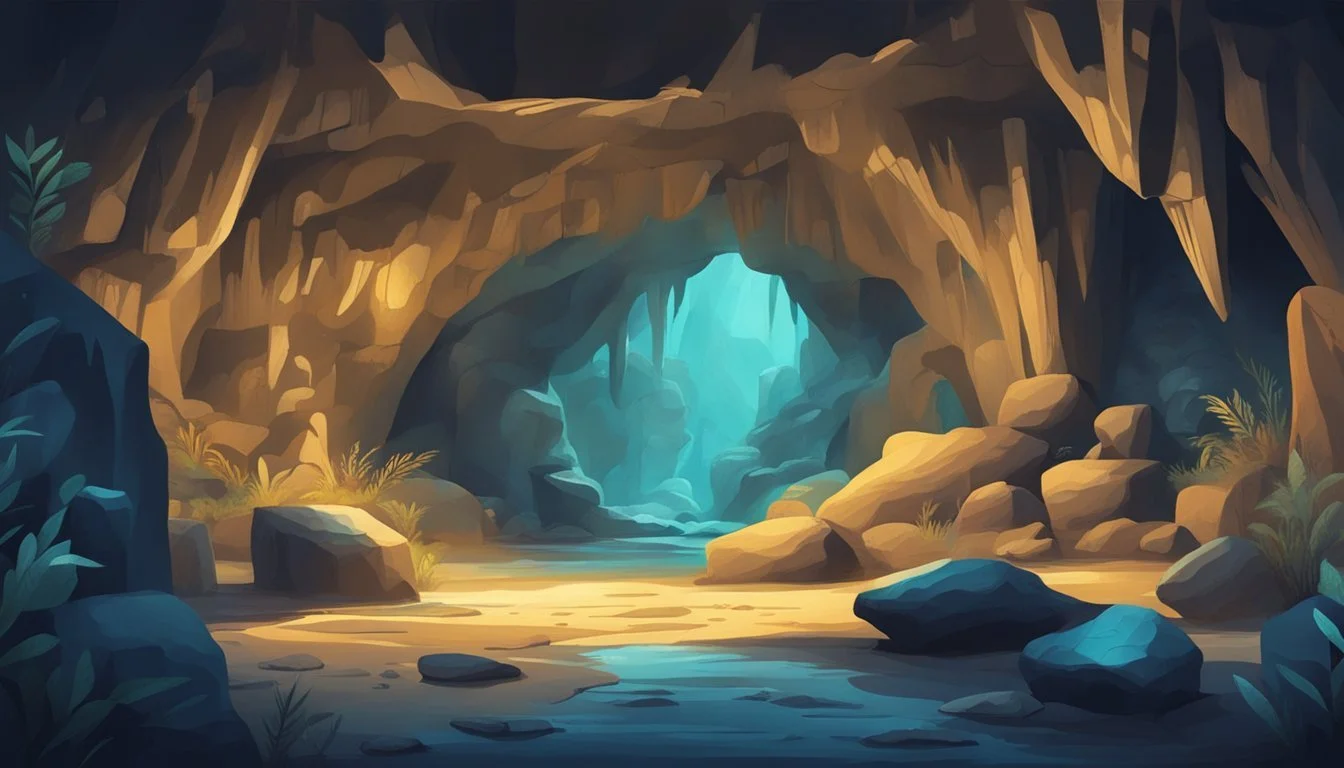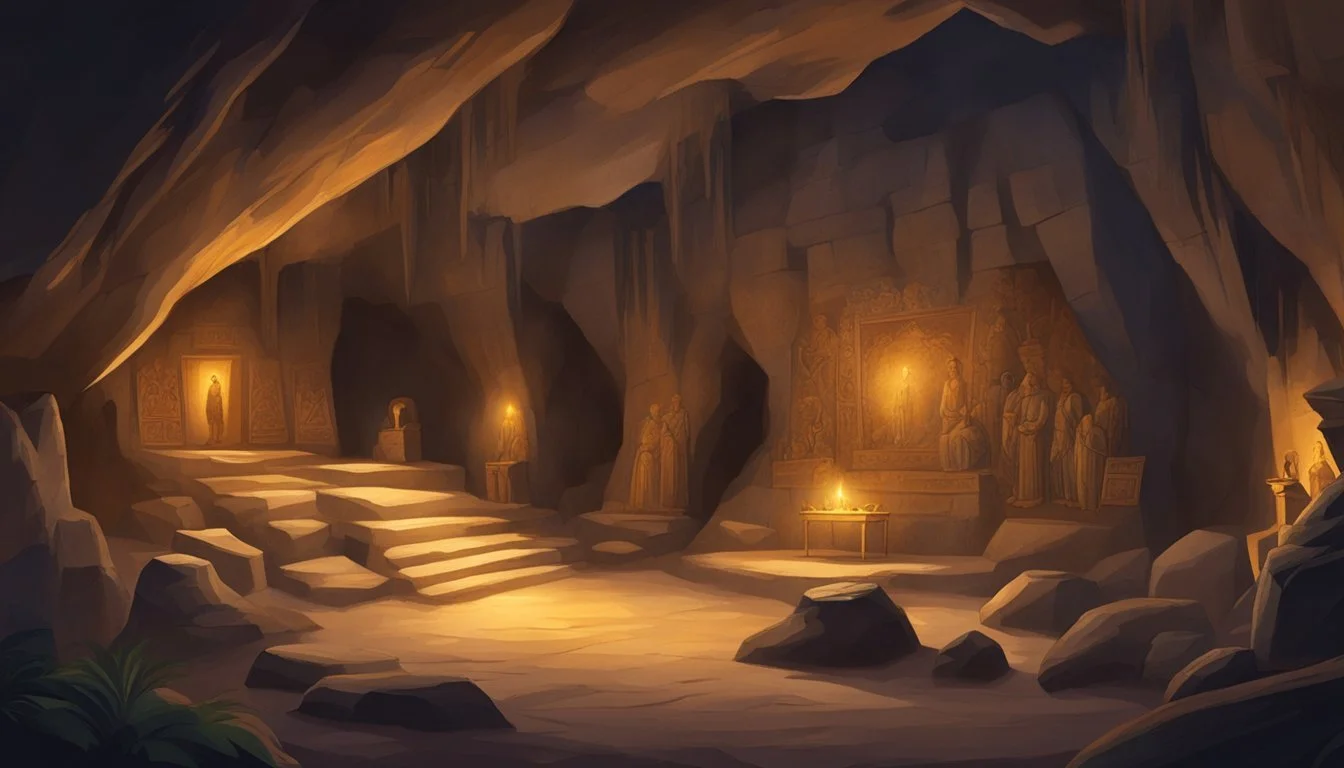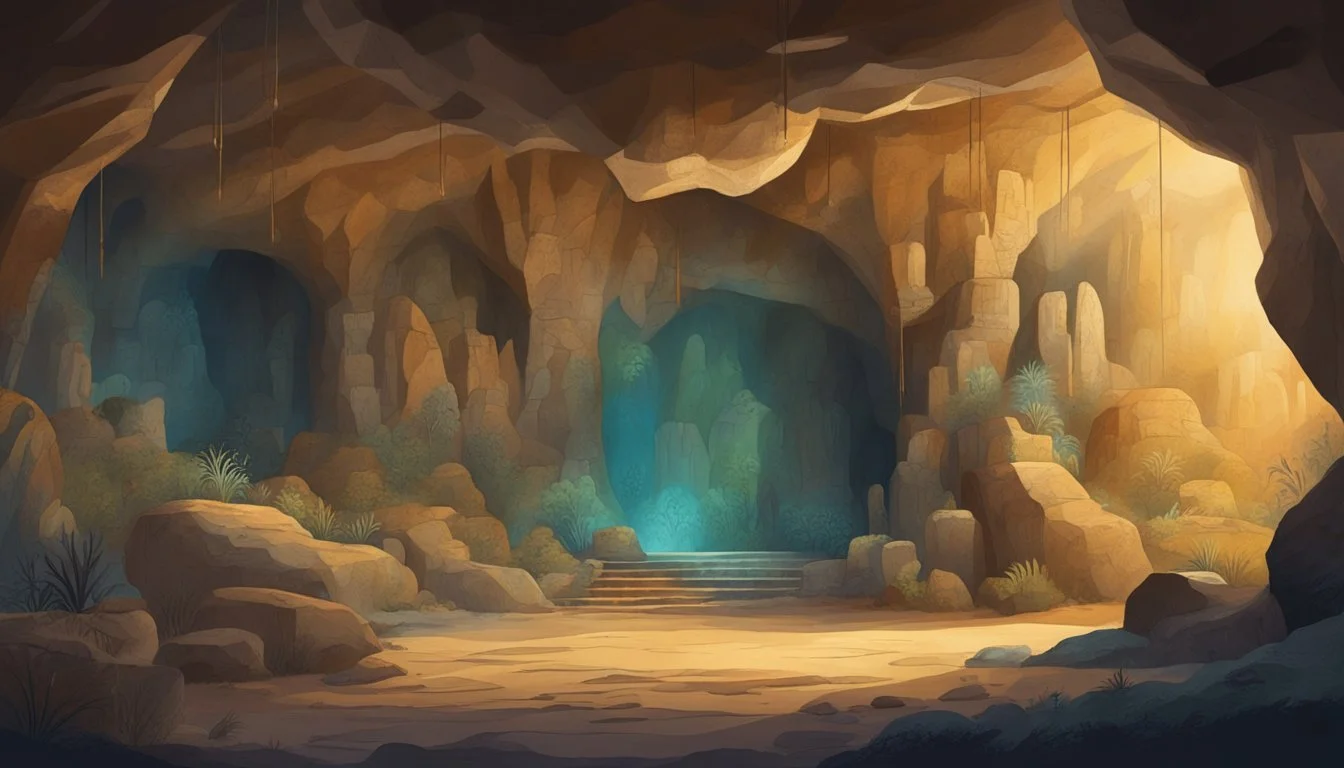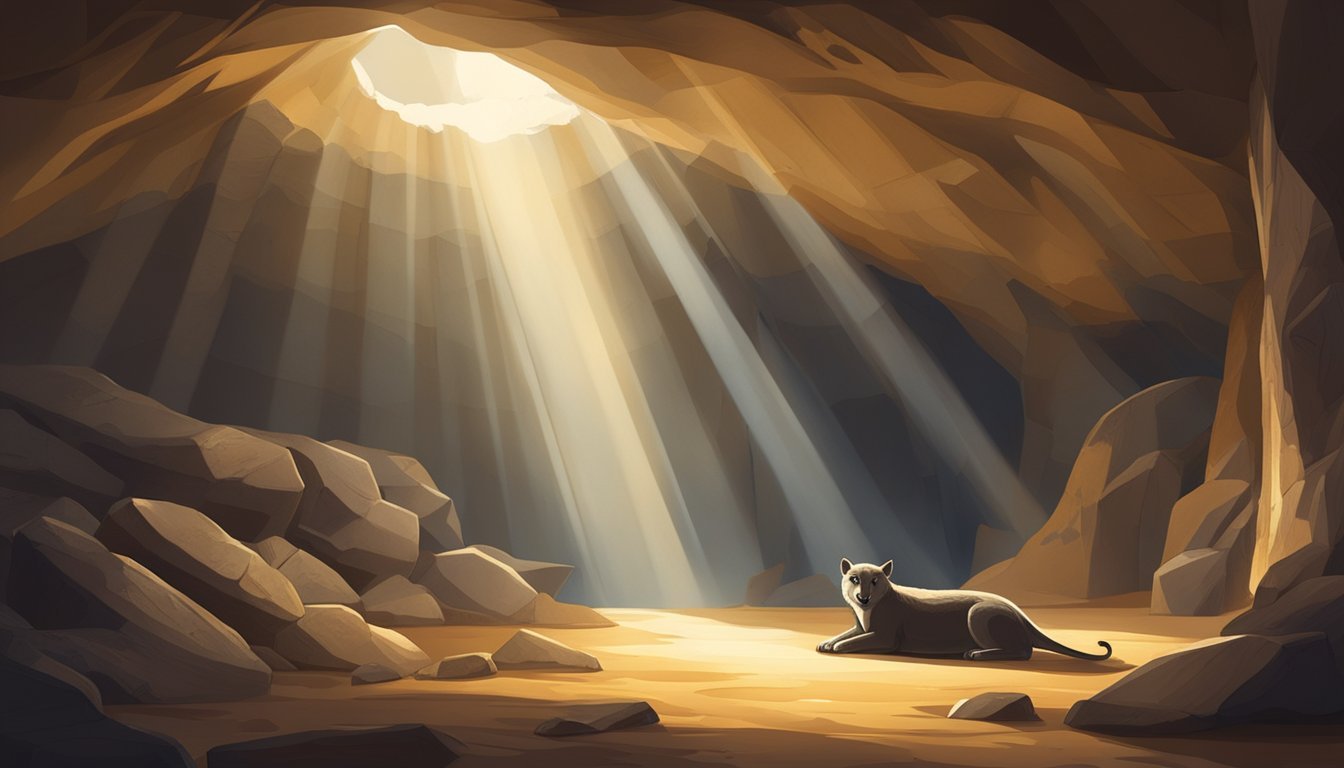From Cave to Canvas: The True Discovery in Cave of Forgotten Dreams
Unveiling Prehistoric Art's Impact
Werner Herzog's documentary "Cave of Forgotten Dreams" takes viewers on an unprecedented journey into the Chauvet Cave in southern France. This remarkable site houses some of the oldest known human-painted images, dating back over 30,000 years. The film offers a rare glimpse into a carefully protected treasure trove of Paleolithic art.
The true discovery in "Cave of Forgotten Dreams" lies not just in the ancient paintings themselves, but in the connection they forge between modern viewers and our distant ancestors. Herzog's 3D cinematography brings these prehistoric artworks to life, allowing audiences to experience their depth and texture as if standing in the cave itself. The film's exploration of the Chauvet Cave paintings provides insight into the minds and creativity of early humans.
The documentary extends beyond mere visual documentation, incorporating interviews with scientists and experts. These discussions offer context and interpretation, helping viewers understand the significance of the cave paintings. By blending stunning visuals with scholarly insights, "Cave of Forgotten Dreams" creates a bridge across millennia, inviting reflection on human artistic expression and its enduring power.
Exploring the 'Cave of Forgotten Dreams'
Werner Herzog's documentary "Cave of Forgotten Dreams" offers a rare glimpse into the Chauvet Cave, a treasure trove of prehistoric art. The film showcases ancient paintings and engravings that provide insight into early human creativity and culture.
Historical Significance
The Chauvet Cave contains some of the oldest known human-painted images, dating back approximately 32,000 years. These artworks predate previously discovered cave paintings by nearly 15,000 years. The cave's pristine condition has preserved a remarkable record of Paleolithic art.
The paintings depict various animals, including horses, lions, and rhinoceroses. The artists used sophisticated techniques such as perspective and shading, challenging previous assumptions about prehistoric artistic capabilities.
Archaeologists have found no evidence of long-term habitation in the cave. This suggests it may have served a primarily ceremonial or spiritual purpose for our ancient ancestors.
Geographical Location and Topography
The Chauvet Cave is located in southern France, near the natural limestone bridge of Pont d'Arc. The cave's entrance was sealed by a rockfall approximately 20,000 years ago, which protected its contents from external influences.
The cave system extends for about 400 meters and consists of a series of chambers and galleries. Its walls and ceilings are adorned with hundreds of animal paintings and engravings.
Access to the cave is strictly limited to preserve its delicate ecosystem and fragile artworks. Herzog's film provides a unique opportunity for the public to experience this remarkable site without physically entering it.
The Journey of Discovery
The Chauvet Cave's discovery unveiled a treasure trove of prehistoric art, offering unprecedented insights into ancient human creativity and culture. Careful excavations and studies revealed remarkable findings that transformed our understanding of early human artistic expression.
Initial Discoveries and Excavations
The Chauvet Cave was discovered in 1994 by three French speleologists: Jean-Marie Chauvet, Eliette Brunel, and Christian Hillaire. Upon entering the cave, they were astonished to find hundreds of well-preserved prehistoric paintings and engravings.
The cave's entrance had been sealed by a rockfall around 20,000 years ago, preserving the artwork in pristine condition. This natural time capsule allowed researchers to study the paintings without interference from later human activities.
Initial surveys revealed that the cave contained over 1,000 images, including depictions of 14 different animal species.
Key Archaeological Findings
Carbon dating of the cave paintings revealed their remarkable age, with some dating back to 32,000-36,000 years ago. This made Chauvet Cave home to some of the oldest known cave art in the world.
The paintings displayed sophisticated techniques, including:
Perspective drawing
Shading
Use of natural rock contours to create 3D effects
Researchers discovered that the artists used charcoal and ochre pigments to create their masterpieces. They also found evidence of ancient human and animal activity in the cave, including footprints, bones, and hearths.
The cave's artwork provided valuable insights into Ice Age fauna, showing extinct species like woolly rhinoceroses and cave lions. This visual record enhanced scientists' understanding of the region's prehistoric ecosystem.
Artistic Insights
The Chauvet Cave paintings offer remarkable glimpses into early human artistic expression. These ancient works provide valuable insights into prehistoric art techniques and symbolic meanings.
Analysis of Cave Paintings
The Chauvet Cave paintings display sophisticated artistic techniques. Artists used charcoal and ochre to create vivid depictions of animals. They employed perspective and shading to give depth and movement to their subjects.
The paintings feature a diverse array of wildlife, including horses, lions, mammoths, and rhinos. Some images overlap, creating dynamic, layered compositions. Artists took advantage of the cave's natural contours, incorporating rock formations into their work.
Handprints and abstract symbols accompany the animal figures. These elements suggest the paintings held deeper cultural or spiritual significance beyond mere decoration.
Interpretation of Symbolism and Expressions
The cave paintings likely served multiple purposes for their creators. They may have been used in rituals or to record important events. The predominance of large, dangerous animals could indicate their spiritual or practical importance to the artists' society.
Recurring motifs, like the Venus figure and palm prints, hint at shared cultural symbols. The dynamic poses of many animals suggest the artists were keen observers of nature. This attention to detail provides insights into the cognitive abilities of early humans.
Some researchers interpret certain groupings of animals as narrative scenes. These potential stories offer tantalizing clues about the mythologies and beliefs of prehistoric people.
Technological Advances in Archaeology
Modern archaeological techniques have revolutionized the study and preservation of ancient sites like the Chauvet Cave. These innovations allow researchers to explore and document fragile environments without causing damage.
Innovative Techniques for Preservation
Non-invasive imaging methods now play a crucial role in archaeological research. Multispectral imaging reveals hidden details in cave paintings by capturing data across various light wavelengths. This technique has uncovered previously invisible elements in the Chauvet Cave artwork.
Laser scanning creates highly accurate 3D models of cave interiors. These models help track changes over time and aid in conservation efforts. At Chauvet, laser scans have documented the precise locations and conditions of each painting.
Climate control systems maintain stable environments in sensitive sites. The Chauvet Cave employs advanced monitoring equipment to regulate temperature and humidity, preserving the delicate artwork for future generations.
3D Mapping and Virtual Reality Tours
3D photogrammetry combines multiple photographs to create detailed digital models of archaeological sites. This allows researchers to study intricate details of cave formations and artwork from any angle.
Virtual reality (VR) technology now offers immersive experiences of inaccessible locations. VR tours of the Chauvet Cave allow visitors to explore the site without risking damage to the fragile ecosystem.
Augmented reality (AR) applications overlay digital information onto real-world views. In archaeology, AR can provide contextual information about artifacts and sites, enhancing understanding for both researchers and the public.
The Impact on Modern Art
The Chauvet Cave paintings have profoundly influenced contemporary artists and art movements. Their primal beauty and sophisticated techniques continue to inspire new artistic explorations and interpretations.
Influence on Contemporary Artists
Many modern artists draw inspiration from the Chauvet Cave paintings. Sculptors like Anish Kapoor explore the interplay of light and shadow, reminiscent of the cave's flickering torch-lit walls. Painters such as Miquel Barceló incorporate ancient techniques like finger-painting and splattering into their work.
The raw energy and movement captured in the prehistoric animal figures have inspired performance artists. Choreographers like Sidi Larbi Cherkaoui create dance pieces that embody the fluid, dynamic lines of the cave art.
Digital artists use 3D mapping and projection to bring cave paintings to life, creating immersive experiences that blend ancient and modern technologies.
Comparative Study with Modern Art Movements
The Chauvet Cave paintings share surprising similarities with modern art movements. Their abstract representations and use of negative space echo minimalist principles. The layered, overlapping figures resemble cubist techniques, breaking traditional perspective rules.
The emotional intensity and expressive brushstrokes of the cave paintings parallel abstract expressionism. Artists like Willem de Kooning drew inspiration from primitive art forms, including cave paintings, in their gestural works.
Surrealist artists like Joan Miró found kinship with the dreamlike quality of cave art. The fluid boundaries between human and animal forms in the Chauvet paintings resonate with surrealist explorations of the subconscious.
Cultural and Psychological Reflections
The Chauvet Cave paintings offer profound insights into our ancient ancestors' minds and societies. These artworks reveal deep connections across millennia and provide clues about Paleolithic culture.
Human Connection with Ancestral Art
The cave paintings evoke a powerful sense of connection to our distant ancestors. Viewers often report feeling awe and wonder when confronted with these ancient images. The skillful depictions of animals and human handprints create an emotional bridge across time.
These artworks demonstrate the shared human drive for creative expression. Despite the vast temporal gap, modern observers can relate to the artists' intentions and techniques. The paintings' vivid naturalism and dynamic compositions resonate with contemporary aesthetic sensibilities.
The preservation of these images allows for a unique form of intergenerational communication. Through them, Paleolithic humans speak directly to their descendants, sharing their observations and experiences.
Insights into Paleolithic Era's Society
The Chauvet Cave paintings provide valuable information about Paleolithic social structures and beliefs. The choice of subjects and artistic techniques offers clues about the priorities and worldviews of these early human communities.
The predominance of animal imagery suggests a society deeply connected to the natural world. Accurate depictions of various species indicate close observation and ecological knowledge. This reliance on fauna likely extended beyond art into religious and economic spheres.
The presence of human hand stencils hints at the importance of individual identity within the group. These personal marks may have served ritual or social functions, marking territory or participation in ceremonies.
The cave's restricted access and the paintings' locations imply a complex social organization. Specialized artists and spiritual leaders likely played significant roles in creating and maintaining these sacred spaces.
Conservation Efforts
The Chauvet Cave's preservation requires specialized techniques and international cooperation. Strict access protocols and environmental controls protect the delicate Paleolithic art.
Challenges in Preserving the Cave
Maintaining stable temperature and humidity levels is crucial for preserving the cave paintings. Fluctuations can lead to condensation and microbial growth, potentially damaging the ancient artwork.
The cave's fragile ecosystem is also at risk from human presence. Researchers and visitors introduce foreign microorganisms and alter air composition. To mitigate this, strict access protocols limit entry to a few hours per day for small groups of scientists.
Carbon dioxide exhaled by humans poses another threat. It can interact with cave moisture to form carbonic acid, which erodes limestone surfaces. Advanced ventilation systems help regulate CO2 levels and air quality.
International Collaboration and Contributions
UNESCO designated Chauvet Cave as a World Heritage Site in 2014, recognizing its global importance. This status has facilitated international cooperation in conservation efforts.
French authorities work closely with experts from various countries to develop and implement preservation strategies. These include:
Non-invasive imaging techniques for documenting the artwork
Remote monitoring systems to track environmental conditions
Development of specialized clothing for cave entry to minimize contamination
International funding supports ongoing research and conservation projects. Contributions from organizations like the Getty Conservation Institute have enabled the use of cutting-edge technologies in preservation efforts.
Collaborative studies involving geologists, microbiologists, and art conservators continue to improve understanding of the cave's ecosystem and refine protection methods.
The Legacy of the Cave
The Chauvet Cave's discovery has profoundly impacted our understanding of prehistoric art and human creativity. Its preservation efforts and research have opened new avenues for education and cultural identity.
Educational Implications
The Chauvet Cave has revolutionized archaeological education. Its intricate paintings offer unique insights into Paleolithic life and artistic techniques. Museums worldwide now feature replicas and virtual tours, making this ancient art accessible to students and researchers.
These educational initiatives have sparked renewed interest in prehistoric studies. Universities have developed specialized courses focusing on cave art analysis and preservation. The cave's legacy extends beyond academia, inspiring artists and filmmakers to explore early human creativity.
Heritage and Identity
The Chauvet Cave has become a symbol of human cultural heritage. Its artworks demonstrate the deep roots of human creativity, challenging previous notions about prehistoric societies. This discovery has fostered a sense of shared ancestry among diverse cultures.
Local communities near the cave site have experienced a cultural renaissance. Tourism has increased, prompting the development of educational centers and guided tours. These activities have created jobs and boosted the local economy.
The cave's influence reaches beyond France. It has inspired global discussions about the protection of ancient sites. Governments and organizations now collaborate more closely on preserving humanity's earliest artistic expressions.






